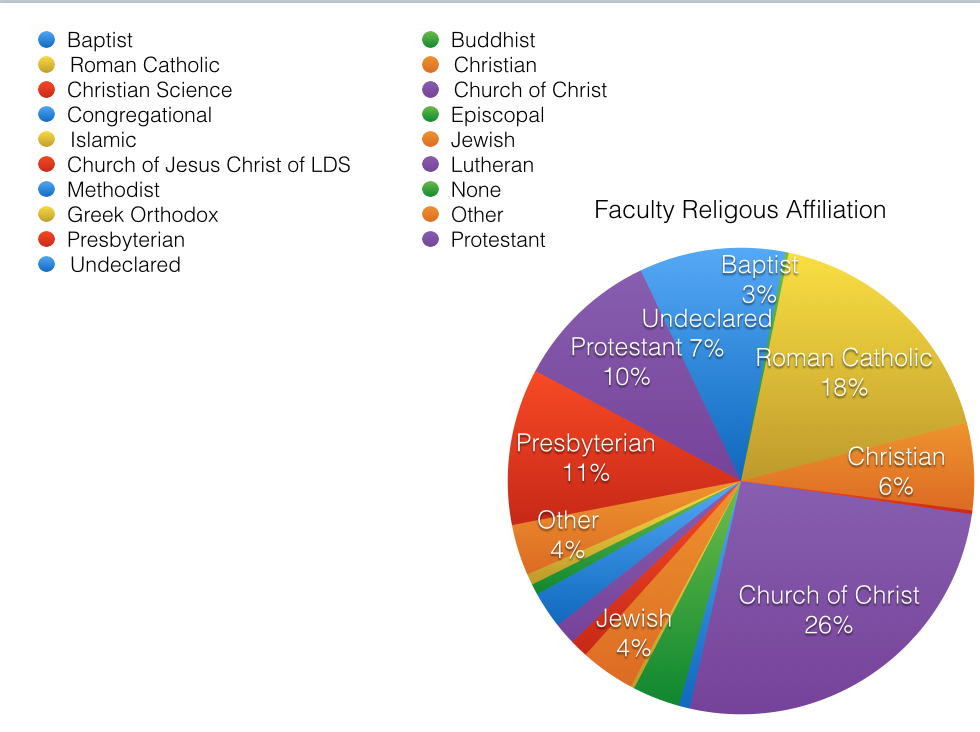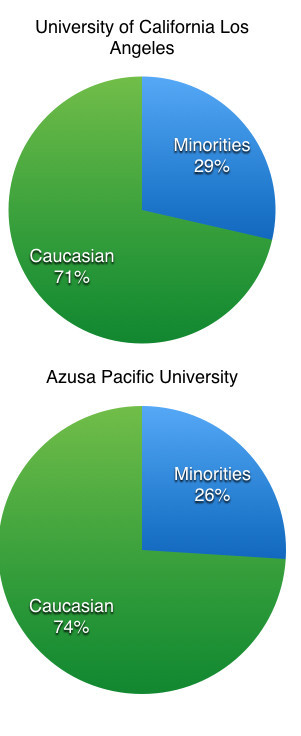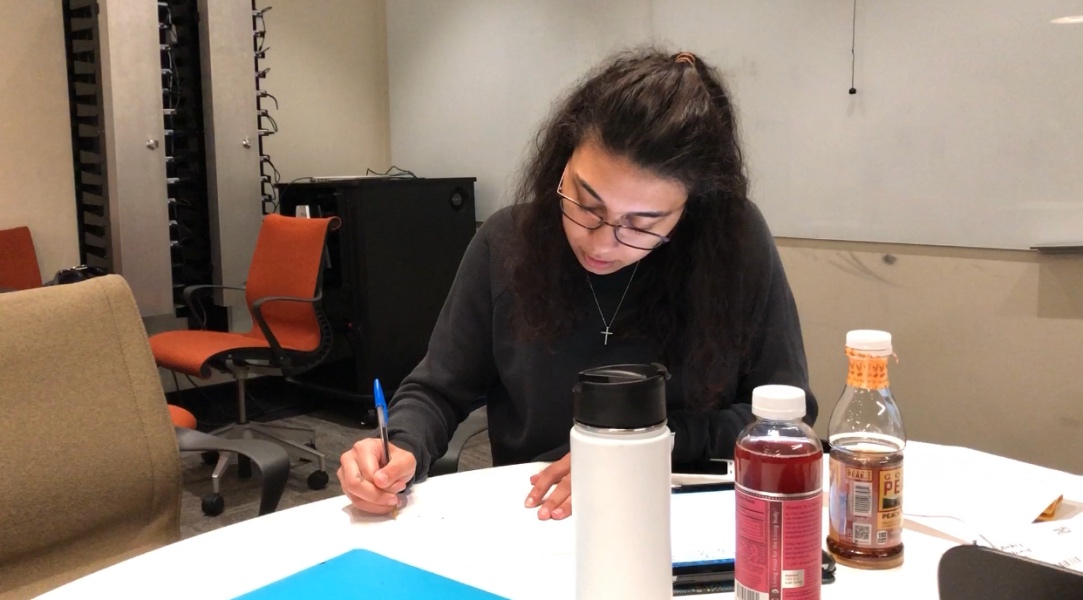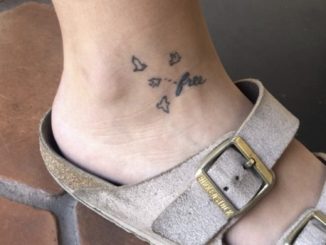
While Pepperdine University has made great strides on student and staff member diversity, university officials are still struggling to recruit diverse faculty.
A limited selection pool of prospective faculty with doctorates, restrictions as a Christian university and lack of recruitment funding make hiring difficult. Prior money for opportunity hirings is currently dried up, administrators said.
“At some levels, it’s almost there and at other levels, we have got a long way to go,” Dr. Ken Waters, chair of the Communication Division, said. “We have been deliberate with both student recruitment and faculty hiring.”
According to Pepperdine’s Office of Institutional Effectiveness Fact Book, the faculty is the least diverse group on campus. Within all Pepperdine schools, 51 percent of students are minorities, compared with 37 percent minority staff members and only 19 percent of minority professors.
Pepperdine faculty members don’t accurately represent the demographics of the wider Los Angeles County. According to 2013 United States Census Bureau estimates, 52 percent of LA residents are minorities. 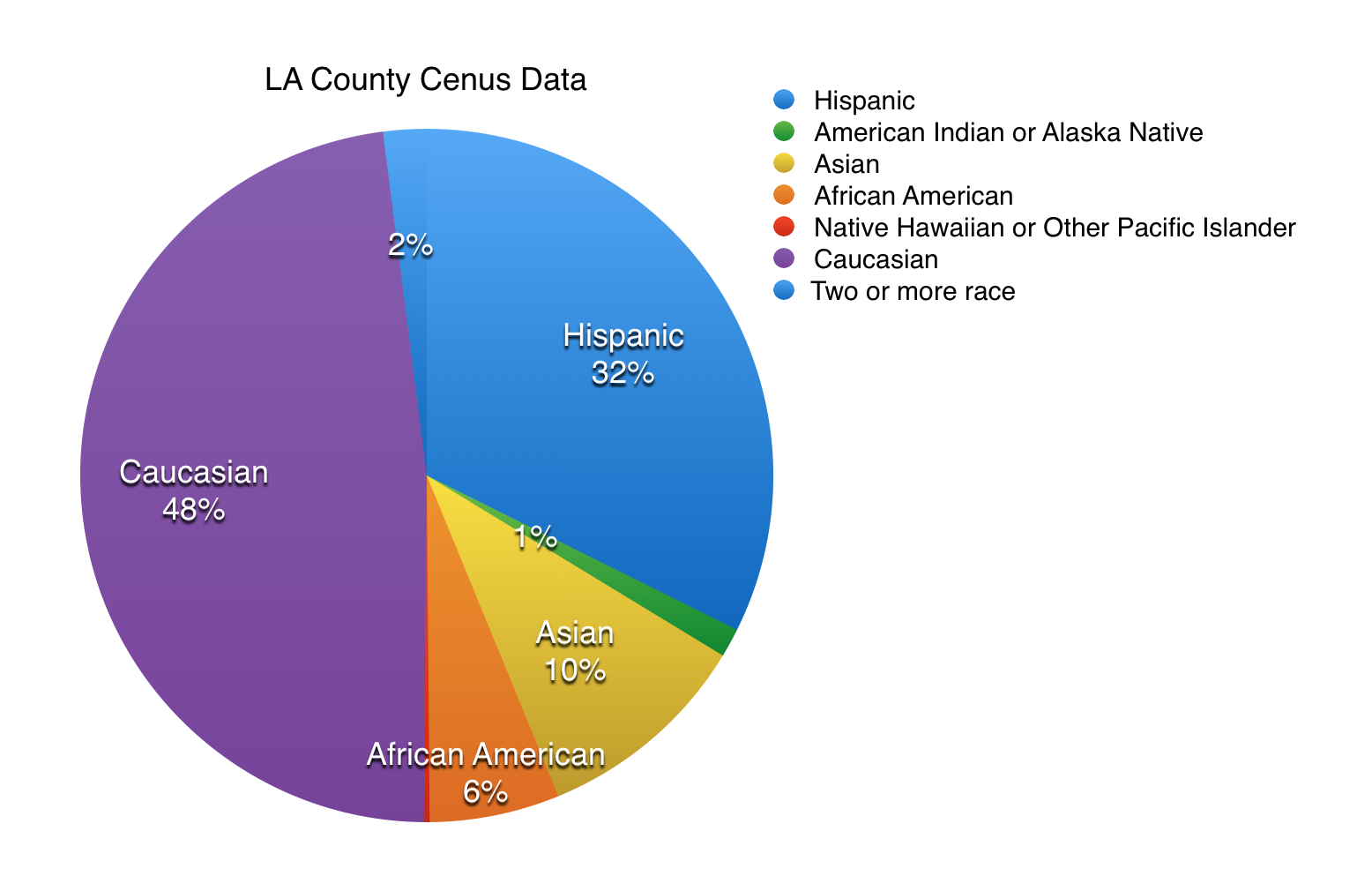
![]() The most problematic obstacle in finding diverse faculty is the small pool of potential faculty members with a doctorate.
The most problematic obstacle in finding diverse faculty is the small pool of potential faculty members with a doctorate.
“The problem in the faculty arena is you have to be Christian and you have to have a Ph.D.,” Waters said. “The pool of people available for us to hire is pretty small relatively speaking.”
Dr. Timothy Willis, chair of the Religion Division, said the selection process makes it easier to foster diversity within students than with faculty.
“With students, you have a whole new crop every four years,” Willis said. “You want to keep good faculty, so it could take around 34 years (for an entire new group). It’s a much slower thing.”
Constance Fulmer, associate dean of Teaching and Assessment, said every time they hire somebody, there is at least one diverse, serious candidate who is being considered.
“It is certainly one of the highest priorities for the administration,” Waters said. “Whenever we do a search for a new faculty member, trying to bring in people from diverse backgrounds is really high on the priority list.”
Carla Anderson, associate director of Compensation and Employment, said Human Resources has tried to put a lot of time and energy into resources to broaden and diversify the pool of applicants to increase chances that the best qualified person is a diverse individual.
Anderson said Human Resources has advertised in print to attract diverse applicants and educated individual hiring managers on how to appropriately consider these factors.
“…Pepperdine is trying to make a bigger move toward that, especially in the way we market the university,” Anthony Bo Jocson, administrative coordinator for Student Activities, said.
Pepperdine’s affiliation to the Churches of Christ creates more restrictions in recruitment, making it more difficult to foster diversity.
As a Christian-affiliated university, Pepperdine administrators said they are guided by their Christian mission which inspires love and acceptance for diverse cultures.
“The fact that Pepperdine puts itself out there as a Christian university is automatically going to restrict the diversity we are going to have,” Willis said. “We are going to be predominantly Christian.”
Pepperdine’s lack of flexibility in recruitment funding also influences the recruitment of diverse faculty members.
New faculty members are hired on a fixed scale. The chair of the Rank, Tenure and Promotion committee looks over the extent of the person’s teaching experience and assigns a rank. Seaver College gives a range of their possible salary, so hiring managers have little flexibility what they can offer a candidate.
Pepperdine has had a few grants over the years to help bring in more diverse professors.
The James Irvine Foundation gave Pepperdine a grant in the past to promote faculty diversity by helping minority scholars become visiting instructors. There are two professors, Dr. David Holmes and Dr. Daniel Rodriguez, left from eight professors hired with money from this grant.
The former provost of Pepperdine suggested to Rodriguez, now professor of Religion and Hispanic Studies, that he should apply for the program. Rodriguez was the ideal candidate. He was a minority, specifically Hispanic, he was a member of the Churches of Christ and he was a Pepperdine alumnus. Rodriguez was able to work as a visiting instructor as he earned his Ph.D. in Intercultural Studies from Fuller Theological Seminary.
The funding from this grant exhausted after five years.
Waters believes that allocating a portion of Pepperdine’s endowment toward faculty recruitment will improve diversity.
Waters said there recently was an open faculty position in advertising. The Communication Division offered a minority candidate the maximum salary and while the candidate expressed great interest, they turned down the position because they were offered a higher paying job at Apple.
Fulmer disagrees that diversity is connected to money.
“I don’t believe it’s tied to money,” Fulmer said. “I think it’s more of a heart and mind thing than money because we hire new faculty anyways.”
Some divisions are doing better than others.
“The divisions are so different in size and some have several disciplines within their division,” Fulmer said. “It’s hard to lump them as divisions and make a judgment.”
Waters said new faculty are much more diverse than before. He believes all the divisions are doing a better job of recruiting and hiring minority faculty.
“We are keenly aware of the diversity of students from the communication division, so we actively recruit to try to make sure…we can get our numbers to at least match the student body,” Waters said.
Along with faculty, Pepperdine has made a big push for diversity among staff as well.
“In all of our new supervisor orientations or consultations with hiring managers, we always discuss these issues in training sessions and how important diversity is to us,” Anderson said.
Anderson said it’s difficult to compare staff with faculty because the two are different employee classifications. There is probably more flexibility in turn over and so forth with staff.
“Faculty are contract employees and have tenure or tenure track positions, while staff are ‘at-will’ employees, meaning the employee can leave at any time or the employer can let them go at anytime with good reason,” Anderson said.
In comparison with other public and private universities, Pepperdine’s faculty falls behind in diversity. The University of California, Los Angeles has 29 percent minorities among its faculty and Azusa Pacific University has 26 percent minorities, compared with Pepperdine’s 19 percent.
There are some schools that are behind Pepperdine as well. Carr said Lubbock Christian University, his undergraduate and graduate school, has a lack of faculty diversity that was worse than Pepperdine. According to collegefactual.com, 90 percent of LCU faculty are Caucasian.
The Pepperdine University website states diversity as a multitude of dimensions; including race, ethnicity, religion, gender, cultural background, socio-economic status, class, ability, national origin and more.
“I don’t think in any area, we can say ‘here we are, we’ve done it,’” Fulmer said. “We just need to keep working and be ever mindful of the need to improve in every area.”
Fulmer said Pepperdine also wouldn’t stop until there’s an equal number of men and women in the faculty. Currently, Pepperdine has 402 male faculty members and 307 female faculty members. There are a lot of women who still wish they had more equal opportunities, Fulmer said.
“All of us bring our life experience to the classroom and professors are no different,” Waters said. “I think it’s great to expose students to different worldviews, ways of looking at the truth, ways of processing the truth and to be challenged by people whose life experiences are different than their own.”
Jennevieve Fong completed this story in Dr. Christina Littlefield’s spring 2015 Jour 241 class.


